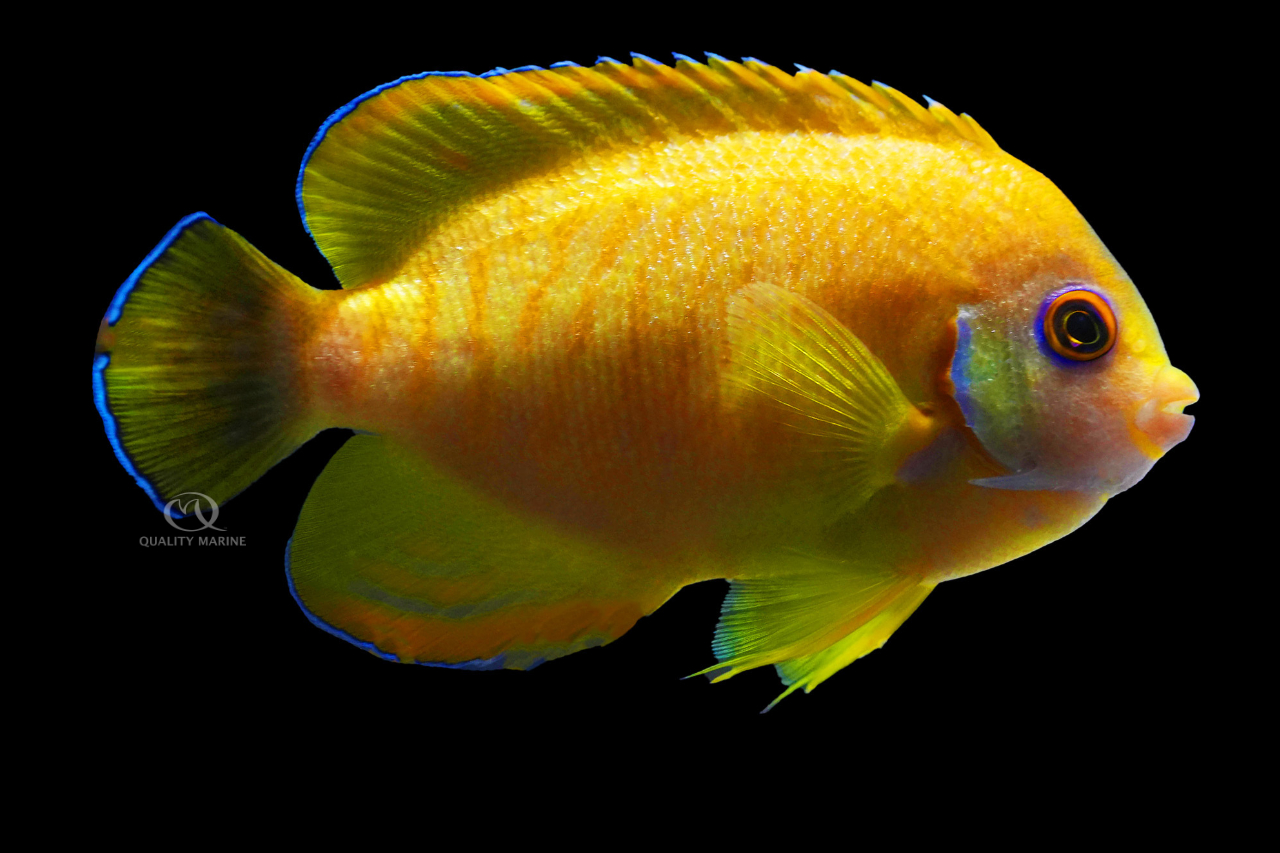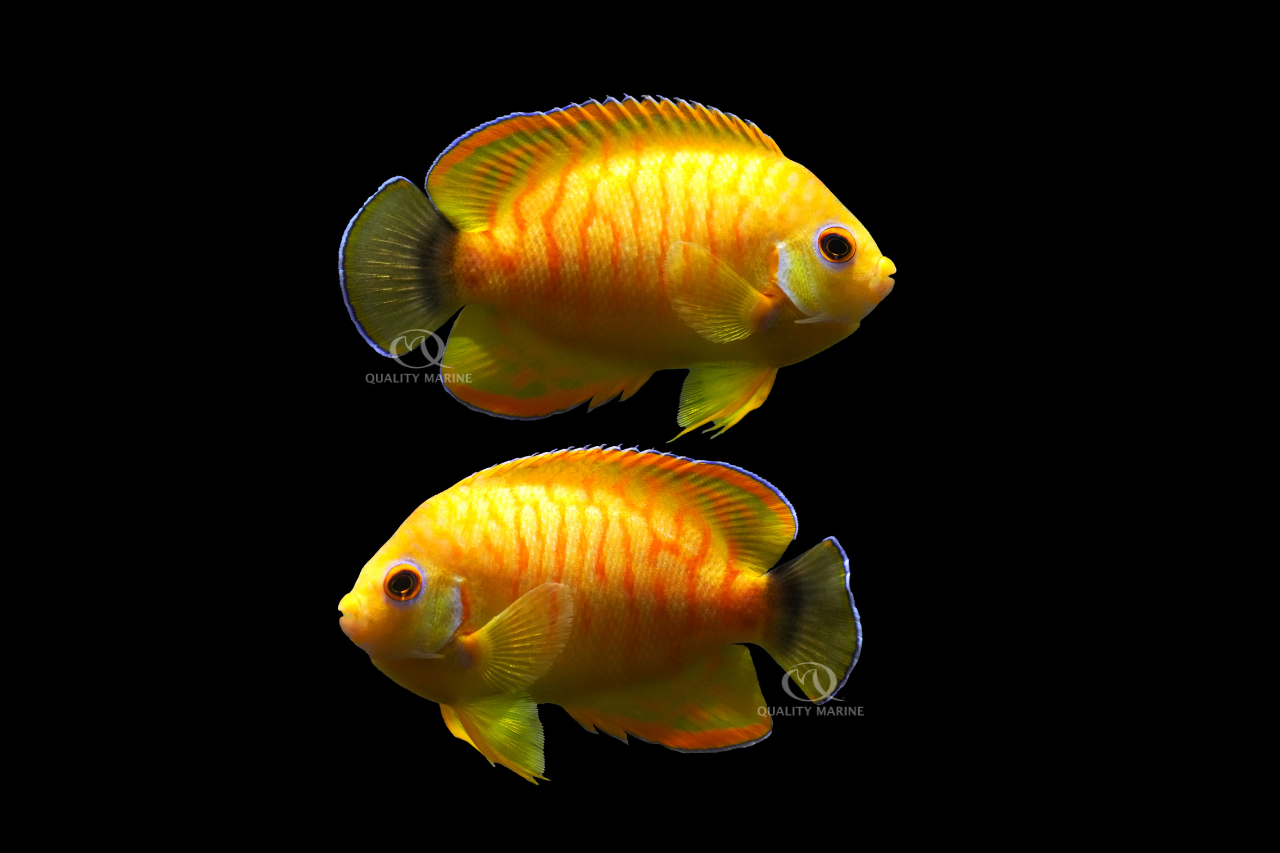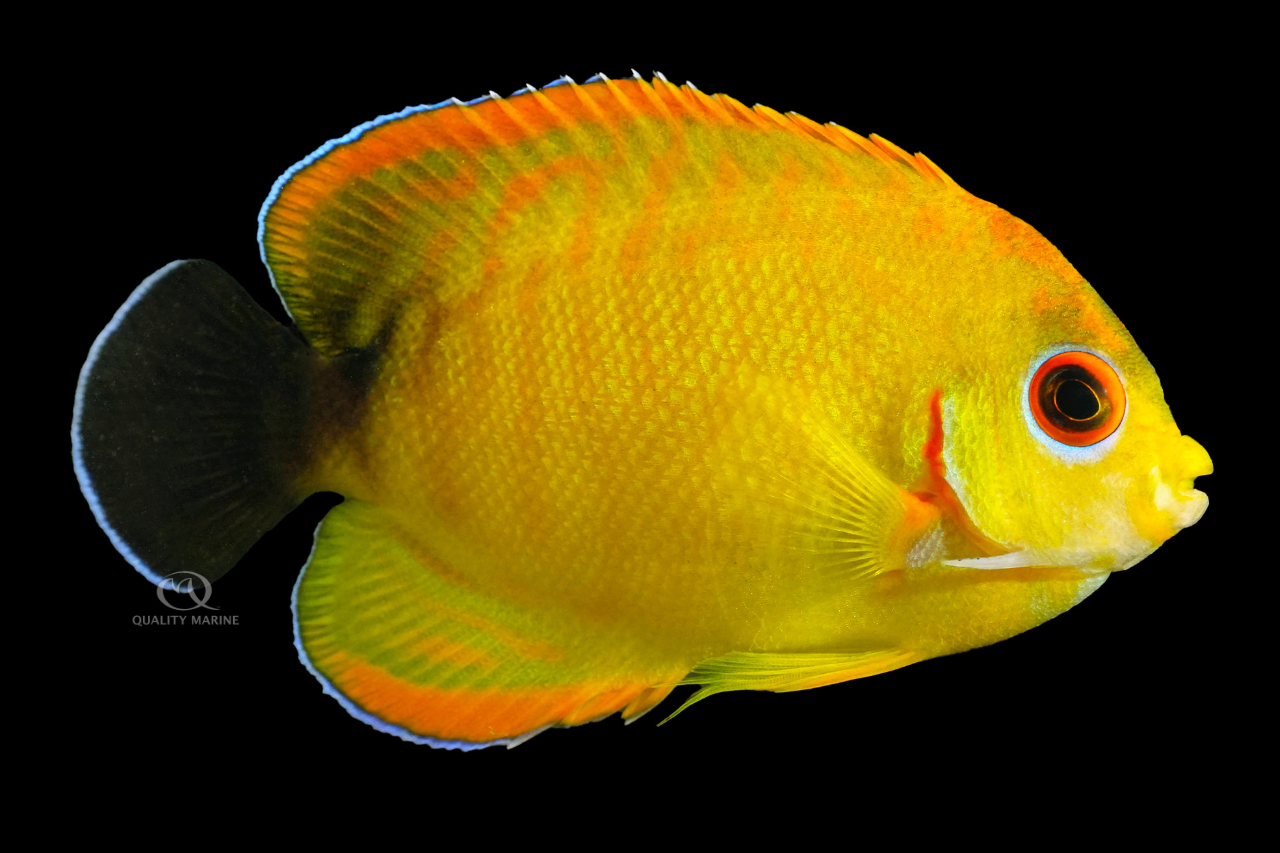Tank Tiger!


There is a good variety of Pygmy and Dwarf Angelfish that are regularly available to North American aquarium enthusiasts, and they are universally excellent fish for the home aquarium. They are sized well, hardy, and invariably sport some amazing coloration or patterns. Then there are a few that are not so regularly available, some either have tiny wild ranges and come from prohibitive depths or are the ultra-rare products of unintentional hybridization and some even rarer ones are one off mutants, perhaps never to be seen again! Happily, today is not that day, because we're lucky enough to have not just one, but a selection of Tigerpyge Angels available! Want to know what's even cooler? We have both wild caught ones and aquacultured ones from our friends at Bali Aquarich!
Now, some of you have stopped reading and are running, driving, biking, flying, or maybe even levitating full tilt toward your Local Fish Store to get your hands on one. This is to be expected. We won't take it personally. Some of the rest of you still reading with us are now wondering, what exactly is a Tigerpyge?
It's a hybrid that is quite rare, though slightly less so now that they are available on an aquacultured basis. For a long time, there was some guesswork as to the parent species of the Tigerpyge, because, well, it's kind of a private moment, and also the odds of finding the parents of any specific fish in the wild are worse than Powerball bad. Regardless, mostly people agreed, based on how they looked, and the range the fish came from that it was likely the parents were the Red Stripe Angel (C. eibli) and the Lemon Peel Angel (C. flavissima). The aquaculturing of this hybrid has removed the guesswork from the heritage and we can confirm that these two species can hybridize, and the union does indeed make a Tigerpyge!

Tigerpyge Angels, like both their parent species, are amazing aquarium fish. Their small adult size makes them adaptable to relatively small aquariums. While we've seen them perfectly healthy and content in displays as small as 75 gallons, which is enough room for them and a few other fish. It has been our experience that the more space they have, the more docile they'll be. They are pretty peaceful fish but are likely to not get along with other Dwarf Angels and might bully very timid tankmates like Firefish. On the other end of that spectrum, they aren't likely to be picked on, but very aggressive fish should probably be avoided out of due care.
They are a very hardy fish and are resistant to common aquarium maladies as long as you maintain reasonable water chemistry. Keep your temperature in the mid 70s, your pH between 8.0 and 8.4 your salinity nice and stable around 1.025 and your nitrates low, under 10ppm at least and lower would be better. They'll love a bunch of rocks to swim through and hide in but will also relish plenty of open swimming space and a good amount of flow through that space. Shoot for at least 10x the total water volume of the tank in flow gpm. While Dwarf Angels aren't really known for their jumping prowess, we have heard of some ending up on the floor, and as a result, we recommend covering this tank to protect your prize Angelfish!
Obviously, the Tigerpyge has been spawned in captivity, but accomplishing this is beyond the scope of all but the most advanced, usually professional, aquarists, and even for them this generally happens in huge, dedicated facilities. Males and females are very difficult to identify, and there is an extended pelagic period.

The one real caveat to keeping these (and to be fair, all Centropyge genus fish) is that there is the possibility that they will nibble coral polyps. While these fish are often listed as a “good possibility” for use in coral heavy displays, we have seen dwarf angels (of pretty much every variety) be model citizens in a wide variety of reef aquariums, and then one day just say, “hmm, that coral polyp looks tasty” and start to snack. Run these experiments at your own peril, we cannot recommend it; if this is the fish you are going to run this gauntlet with, we suggest starting with an aquacultured specimen. It isn't a guarantee that they won't eat your corals, but these fish haven't seen corals as food yet, so your odds may be a little better.
Feeding the Tigerpyge things you DO want it to eat is also very straightforward, for both aquacultured and wild specimens. Wild fish tend to take to prepared foods very easily, and the aquacultured ones have been raised on them! Here, both are getting a mix of thawed meaty foods from Gamma, and a high quality, nutrient dense shot from Nutramar, called Algae and Color Boost. This diet helps enhance their vivid stark coloration and their general health. In the wild, this fish would graze constantly, so offering it some algae-based foods is beneficial, as are multiple feedings a day. Here we feed twice a day, and this is good, more wouldn't hurt, just decrease the amount of food per feeding when you increase the number of mealtimes.
Regardless of whether it is aquacultured or sustainably wild caught the Tigerpyge is an iconic showpiece for your aquarium and, to top it off, also an excellent aquarium fish! They have great personality, stay less than 4 inches long or so, are easy to feed and wildly gorgeous. This is one of those fish that looks stunningly better in person than they ever do in pictures or even video. Trust us, people are going to see this in your tank and say “whoa.” If you've been waiting for your dream fish, it's here, just waiting to make your aquarium home, but someone else wants it too, so don't wait around too long. Head to your Local Fish Store and ask them about Tigerpyge Angels from Quality Marine today!